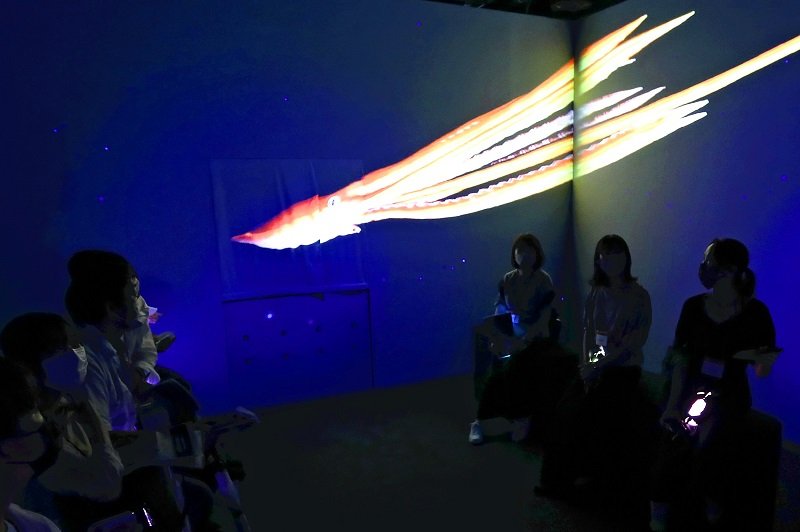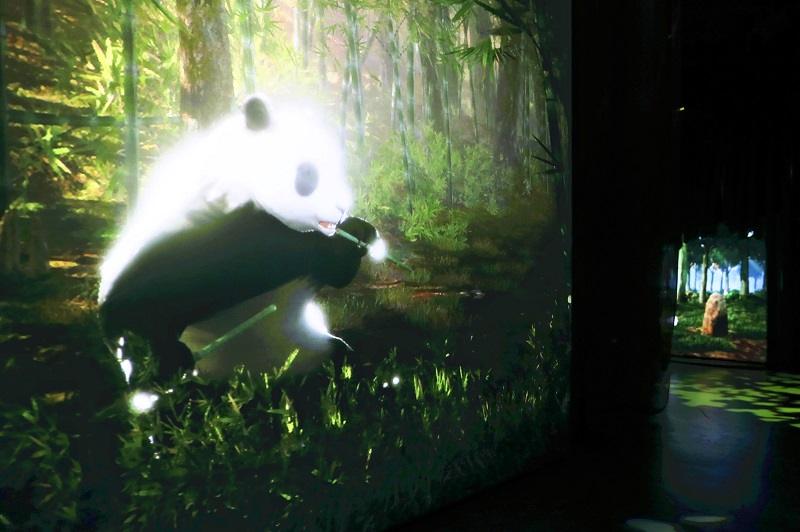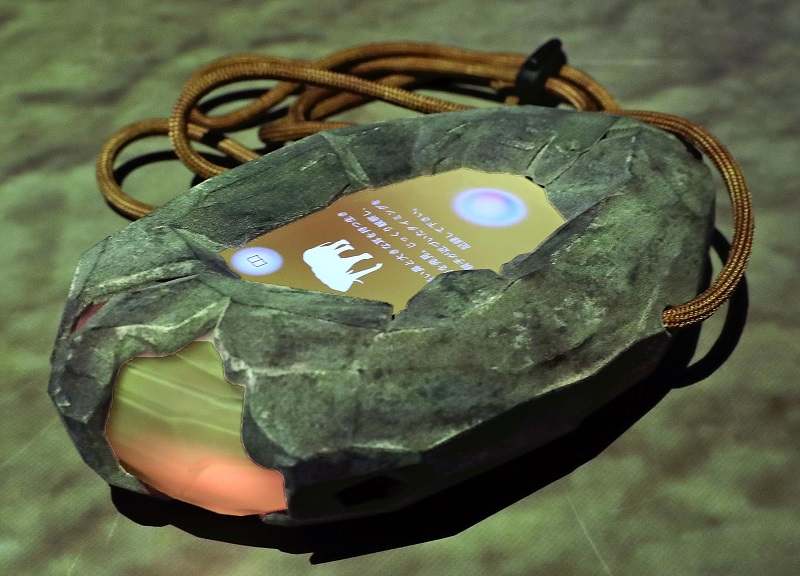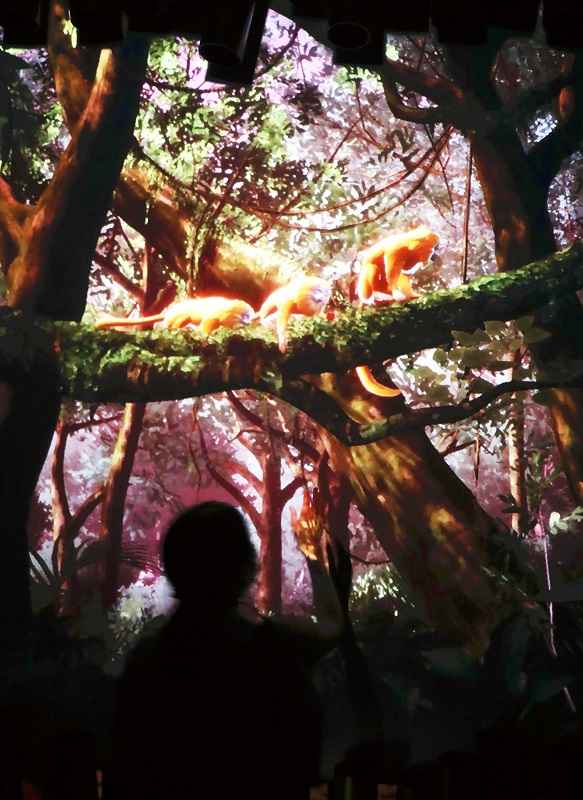Tokyo museum offers animals in the wild — in CG

Visitors watch a virtual giant squid swim in the deep-sea zone of Zukan Museum Ginza in Tokyo.
10:00 JST, August 31, 2022
Children in Japan often read zukan — or illustrated books — that depict the diverse community of living creatures and other things. I’m sure many Japanese people remember devouring page after page of a zukan, wishing they could plunge right into this world of beasts, fish and birds.
Zukan Museum Ginza in Chuo Ward, Tokyo, brings this dream to life. The interactive museum uses computer graphic animations, sound effects and other tricks to create realistic simulations of how creatures live in the wild, such as in displays showing a herd of wildebeests running on a grassland, or a giant panda dexterously holding a piece of bamboo in its hands as it eats.

A giant panda display was added to the museum in July after winning the largest number of votes in a popularity poll conducted by the museum.

When a visitor holding this “stone of recording” approaches the image of a creature, the stone displays its silhouette and a related text.
At the entrance, I was given a “stone of recording.” I was told that it would record information about creatures I met in the museum.
The museum is split into five zones, including a forest, a grassland and a river zone. I headed for the forest and found a monkey covered all over in a coat of golden fur. I hurried toward the monkey to record it on my stone, but alas, it ran away.
The monkey fled because the installations feature sensors that react to human movement.
“We furnished our creatures with the same sense of caution that wild animals have. Try to be aware of how close you are to the creatures,” said Takayuki Kitai, the creative director of the museum.
On my next try, I held my breath and approached the monkey step by step. This time I managed to record the monkey on my stone.
“You can use the stone to make your own zukan,” Kitai said.

A display at the museum shows how monkeys form groups and live on tree branches.
Then I went to the deep-sea zone, a new zone that opened in July. A highlight of the zone is a giant squid, one of the largest invertebrates in the world. The largest giant squid on record measured approximately 14 meters.
The wall was filled with the moving image of a giant squid elegantly and dynamically swimming through water, with its two long tentacles for catching prey joined together as if they formed one shaft. The creation of this moving image was supervised by Tsunemi Kubodera, an honorary researcher of the National Museum of Nature and Science who is the first person in the world to have caught a swimming giant squid on video.
“It’s very similar to [the giant squid] I saw in the deep sea. You’ll be able to feel as if you are aboard a submarine,” Kubodera said confidently.
The days of easy travel may be gone, but this trip to the museum provided me with something even better than travel: a great adventure.

Zukan Museum Ginza
The museum was opened in 2021 by seven companies, including Shogakukan.
Address:6th floor, Tokyu Plaza Ginza, 5-2-1 Ginza, Chuo Ward, Tokyo
Hours: 11 a.m.-7 p.m. on weekdays, 10 a.m.-7 p.m. on Saturdays, Sundays and national holidays. Closed on New Year’s Day.
Admission: ¥2,000 for adults aged 18 or older; ¥1,200 for junior high and high school students; ¥1,000 for elementary school students; and ¥800 for preschool children aged 3 or older. (On Saturdays, Sundays, national holidays and busy days, ¥2,500 for adults; ¥1,700 for junior high and high school students; ¥1,200 for elementary school students; and ¥900 for preschool children.)



